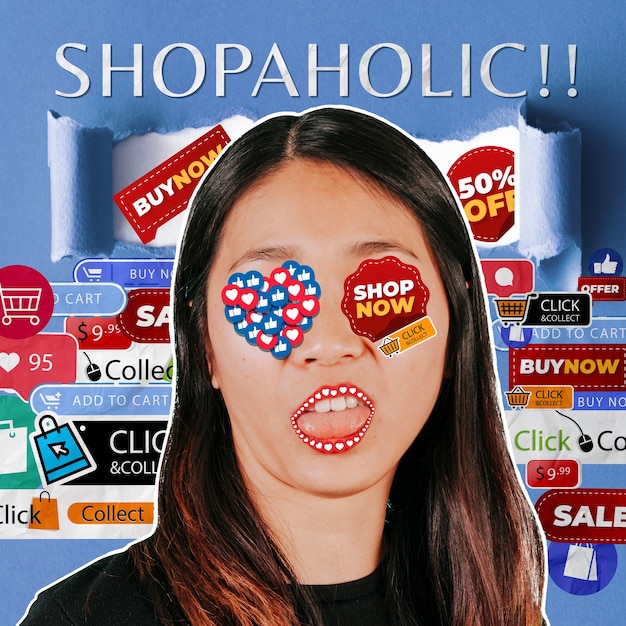Top 10 Social Media Trends in the US: A 2024 Analysis

The Power of Influence: Analyzing the Top 10 Social Media Trends in the US reveals a dynamic landscape shaped by short-form videos, influencer marketing, augmented reality, social commerce, authenticity, data privacy, inclusivity, live streaming, ephemeral Content, and AI-driven experiences.
Social media is constantly evolving, and in the US, these changes are rapid and influential. Understanding the key trends is crucial for businesses and individuals alike to stay ahead. Let’s delve into the power of influence: analyzing the top 10 social media trends in the US that are shaping the digital landscape in the US.
The Reign of Short-Form Video Content
Short-form video content has exploded in popularity, dominating social media platforms. This trend is driven by its engaging nature, easy consumption, and high shareability.
The simplicity and accessibility of creating and watching short videos have revolutionized how people consume information and entertainment online.
TikTok’s Dominance and Beyond
TikTok pioneered this trend, but platforms like Instagram (Reels), YouTube (Shorts), and even Facebook have integrated short-form video features to capture user attention. The appeal lies in the concise, visually stimulating format that caters to shorter attention spans.
Implications for Marketers
For marketers, this means adapting content strategies to prioritize short, impactful videos. Brands are increasingly using TikTok and Reels to create viral challenges, showcase products, and connect with younger audiences. The key is to be authentic, creative, and capture attention within the first few seconds.
- Concise storytelling becomes essential.
- Visual appeal and engagement are paramount.
- Mobile optimization is a must.

The impact of short-form video extends beyond entertainment, influencing education, news dissemination, and social activism. Its versatility and accessibility ensure its continued relevance in the social media ecosystem.
The Rise of Influencer Marketing
Influencer marketing continues to be a dominant force, with brands leveraging the reach and credibility of social media personalities to connect with their target audiences.
This trend has evolved beyond celebrity endorsements to include micro- and nano-influencers who have built highly engaged communities around specific interests.
Authenticity and Engagement
Consumers are increasingly discerning and value authenticity. Influencers who genuinely connect with their audience and promote products they believe in are more likely to drive conversions. Brands are seeking long-term partnerships with influencers who align with their values and can foster genuine relationships with their followers.
Data-Driven Campaigns
Successful influencer marketing campaigns are now heavily data-driven. Brands use analytics tools to track performance metrics, identify the most effective influencers, and optimize their strategies for maximum ROI. This data-centric approach ensures that influencer marketing efforts are targeted, measurable, and impactful.
- Focus on niche influencers for targeted reach.
- Emphasize transparency and genuine endorsements.
- Utilize analytics to measure campaign effectiveness.
The key to influencer marketing success lies in building trust and fostering meaningful connections. Brands that prioritize authenticity and data-driven strategies are best positioned to capitalize on this powerful trend.
The Immersive Power of Augmented Reality (AR)
Augmented Reality (AR) is transforming social media experiences, offering immersive and interactive ways for users to engage with content and products.
AR filters, lenses, and virtual try-on features are becoming increasingly popular, enhancing user engagement and driving brand awareness.
AR Filters and Lenses
Platforms like Snapchat and Instagram have popularized AR filters and lenses, allowing users to overlay digital effects onto their real-world surroundings. Brands are leveraging this technology to create branded filters that users can share, increasing brand visibility and user engagement. These filters often involve games, interactive experiences, and visually appealing effects.
Virtual Try-Ons and Product Demonstrations
AR is also enhancing the shopping experience through virtual try-on features. Consumers can use their smartphones to virtually try on makeup, clothing, and accessories before making a purchase. This technology not only enhances the user experience but also reduces the likelihood of returns, benefiting both consumers and retailers.
- Enhance user engagement with interactive AR experiences.
- Drive brand awareness through branded filters and lenses.
- Improve the shopping experience with virtual try-on features.
AR is poised to play an even greater role in social media, blurring the lines between the digital and physical worlds and opening up new possibilities for creativity, communication, and commerce.
The Evolution of Social Commerce
Social commerce is evolving, with platforms integrating e-commerce features that allow users to seamlessly discover and purchase products directly within social media apps.
This trend is driven by the desire for convenience and the integration of shopping into the social media experience.
In-App Shopping Experiences
Platforms like Instagram, Facebook, and Pinterest have introduced in-app shopping features, allowing businesses to create digital storefronts and tag products in posts and stories. Users can click on these tags to view product details, read reviews, and make purchases without leaving the social media app.
Live Shopping Events
Live shopping events are gaining traction, with influencers and brands hosting live streams where they showcase products, offer exclusive deals, and interact with viewers in real-time. This format combines entertainment with e-commerce, creating a dynamic and engaging shopping experience. Live shopping events create a sense of urgency and exclusivity, driving sales and increasing brand loyalty.
- Offer seamless in-app shopping experiences.
- Utilize shoppable posts and product tags.
- Host live shopping events for real-time engagement.

The convergence of social media and e-commerce is transforming the way people shop, making it easier than ever to discover and purchase products directly within their favorite social media apps. As social commerce continues to evolve, brands must adapt by creating engaging shoppable content and offering seamless in-app shopping experiences.
The Demand for Authenticity and Transparency
Consumers are increasingly demanding authenticity and transparency from brands and influencers on social media. This trend is driven by a growing distrust of traditional advertising and a desire for genuine connections.
Brands that prioritize honesty, ethical practices, and transparent communication are more likely to build trust and foster long-term relationships with their audience.
Real and Unfiltered Content
Consumers are drawn to content that feels real and unfiltered. This includes behind-the-scenes glimpses, honest reviews, and stories that showcase the human side of brands and influencers. Authenticity is not about perfection, but about being genuine and relatable.
Ethical Practices and Social Responsibility
Brands are increasingly expected to demonstrate ethical practices and social responsibility. This includes supporting sustainable initiatives, promoting diversity and inclusion, and addressing social issues. Brands that align with their audience’s values and take a stand on important issues are more likely to earn their trust and loyalty.
- Prioritize real and unfiltered content.
- Embrace transparency in all communications.
- Demonstrate ethical practices and social responsibility.
In an era of information overload and skepticism, authenticity and transparency are invaluable assets. Brands that prioritize these qualities are best positioned to build trust, foster genuine connections, and thrive in the social media landscape.
Data Privacy Concerns and Solutions
Data privacy concerns are on the rise, with users becoming more aware of how their personal information is collected, used, and shared on social media platforms.
This trend is driving changes in privacy regulations and prompting users to take greater control of their data.
Privacy Regulations and Compliance
Regulations like GDPR and CCPA are reshaping the data privacy landscape, requiring companies to be more transparent about their data practices and giving users greater control over their personal information. Brands must comply with these regulations to avoid legal repercussions and maintain user trust.
User Empowerment and Control
Social media platforms are providing users with more tools to manage their privacy settings and control the data they share. Users can now limit data collection, opt out of targeted advertising, and delete their accounts. Empowering users with control over their data is essential for building trust and fostering a healthy social media ecosystem.
- Comply with data privacy regulations.
- Provide users with greater control over their data.
- Be transparent about data collection and usage practices.
Addressing data privacy concerns is not only a legal requirement but also a moral imperative. Brands that prioritize data protection and user empowerment are more likely to build trust and foster long-term relationships with their audience.
The Growing Importance of Inclusivity
Inclusivity is becoming increasingly important on social media, with users demanding representation and equitable treatment for all individuals, regardless of their race, gender, sexual orientation, or ability.
Brands that embrace diversity and promote inclusivity are more likely to connect with a broader audience and foster a sense of belonging.
Diverse Representation in Content
Consumers want to see themselves reflected in the content they consume. This means showcasing diverse individuals in advertising, marketing, and social media campaigns. Brands must go beyond tokenism and genuinely represent the diversity of their audience.
Accessibility and Universal Design
Accessibility is also crucial for inclusivity. Brands should ensure that their content is accessible to individuals with disabilities. This includes providing alt text for images, captions for videos, and designing websites and apps that are easy to navigate for users with visual, auditory, or motor impairments.
- Showcase diverse representation in content.
- Promote equitable treatment and opportunities.
- Ensure accessibility for individuals with disabilities.
Embracing inclusivity is not only the right thing to do but also a smart business strategy. Brands that prioritize diversity, equity, and inclusion are more likely to attract and retain customers, employees, and partners.
The Continued Rise of Live Streaming
Live streaming remains a popular format, offering real-time interaction and engagement between creators and their audience.
Platforms like YouTube, Twitch, Instagram, and Facebook Live enable users to broadcast live videos, host Q\&A sessions, conduct tutorials, and share real-time experiences.
Interactive and Engaging Content
Live streaming is particularly effective because it allows for real-time interaction. Viewers can ask questions, provide feedback, and participate in polls, creating a sense of community and fostering deeper connections with creators. This interactivity is a key driver of engagement and keeps viewers coming back for more.
Live Shopping and Product Demonstrations
Live streaming is also being used for live shopping events, where influencers and brands showcase products, offer exclusive deals, and interact with viewers in real-time. This format combines entertainment with e-commerce, creating a dynamic and engaging shopping experience. Live product demonstrations give potential customers a closer look and the ability to ask questions, making them more likely to purchase.
- Engage with audiences in real-time.
- Host Q\&A sessions and interactive polls.
- Offer exclusive content and behind-the-scenes glimpses.
The immediacy and interactivity of live streaming make it a powerful tool for building community, fostering engagement, and driving sales. As technology evolves, live streaming is likely to become even more sophisticated and integrated into the social media landscape.
The Fleeting Nature of Ephemeral Content
Ephemeral content, such as stories and disappearing posts, continues to be popular, offering a sense of immediacy and exclusivity.
Platforms like Snapchat and Instagram have popularized this format, allowing users to share temporary content that disappears after a set period.
Immediacy and Exclusivity
The appeal of ephemeral content lies in its immediacy and exclusivity. Because the content is only available for a limited time, it creates a sense of urgency and encourages users to view it right away. This can lead to higher engagement rates and a greater sense of connection between creators and their audience.
Creative Expression and Experimentation
Ephemeral content also provides a space for creative expression and experimentation. Because the content is temporary, creators may feel more comfortable taking risks and trying new things without the fear of long-term consequences. This can lead to more innovative and engaging content.
- Create a sense of urgency and exclusivity.
- Encourage immediate viewing and engagement.
- Experiment with creative and innovative formats.
Ephemeral content is a dynamic and engaging format that aligns with the fast-paced nature of social media. Its immediacy, exclusivity, and potential for creative expression make it a valuable tool for brands and influencers looking to connect with their audience.
The Dawn of AI-Driven Social Experiences
Artificial intelligence (AI) is increasingly shaping social media experiences, from content curation to personalized recommendations and chatbot interactions.
AI algorithms are used to analyze user data, identify trends, and deliver customized content that is more likely to resonate with individual users.
Personalized Content Recommendations
AI-powered recommendation engines analyze user behavior and preferences to deliver personalized content recommendations. This ensures that users see content that is relevant to their interests, increasing engagement and satisfaction. Personalized recommendations are becoming increasingly sophisticated, taking into account a wide range of factors, such as past interactions, demographics, and even current mood.
Chatbots and Automated Customer Service
Chatbots are being used to automate customer service interactions on social media. These AI-powered bots can answer frequently asked questions, provide product information, and even process orders. Chatbots improve customer service efficiency and provide users with instant support, enhancing the overall customer experience.
- Leverage AI for personalized content recommendations.
- Automate customer service interactions with chatbots.
- Use AI to identify trends and optimize content strategies.
AI is transforming social media by enhancing personalization, improving efficiency, and enabling new forms of interaction. As AI technology continues to evolve, it is likely to play an even greater role in shaping the future of social media.
| Key Trend | Brief Description |
|---|---|
| 🎬 Short Videos | Dominance of TikTok-style content across platforms. |
| 🤝 Influencer Marketing | Emphasis on authentic partnerships and data-driven campaigns. |
| 👓 Augmented Reality | Immersive experiences driven by AR filters and virtual try-ons. |
| 🛒 Social Commerce | Seamless in-app shopping experiences and live shopping events. |
FAQ
▼
The short-form video trend is fueled by its engaging, easily consumed nature and high shareability, making it ideal for today’s fast-paced digital environment.
▼
Authenticity builds trust with consumers. Influencers who genuinely believe in a product are more likely to drive effective conversions and foster brand loyalty.
▼
AR enhances user engagement by offering immersive experiences like virtual try-ons and interactive filters, blurring the line between digital and physical worlds.
▼
Social commerce provides seamless in-app shopping experiences, reducing friction and allowing customers to purchase directly from their social media feeds.
▼
AI personalizes content, automates customer service, and optimizes strategies, leading to more engaging experiences and improved operational efficiency on social platforms.
Conclusion
As we’ve explored the power of influence: analyzing the top 10 social media trends in the US, it’s clear that social media is a constantly shifting terrain. Adaptation, authenticity, and a keen understanding of emerging technologies are key to navigating this dynamic landscape and harnessing its vast potential.
